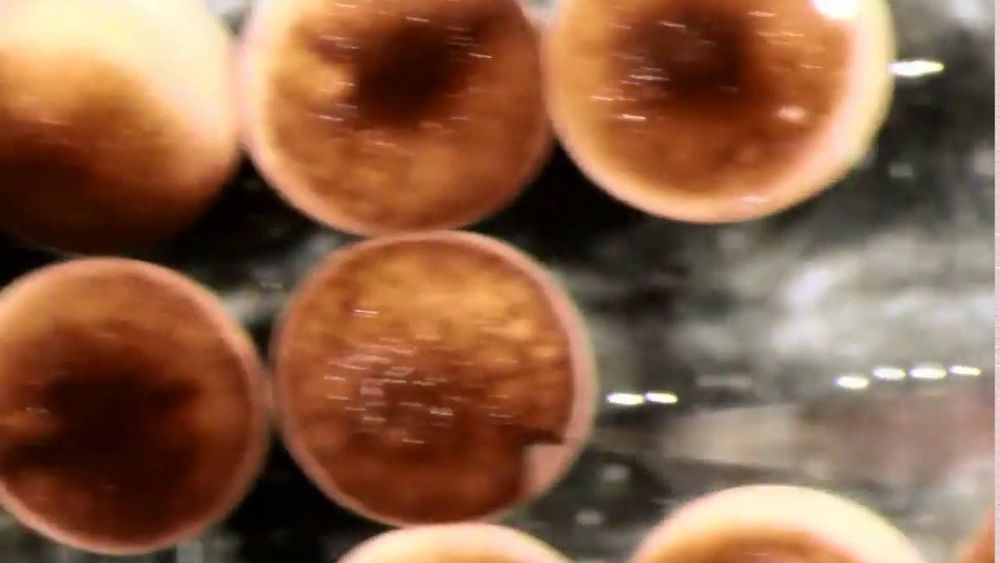Jan 16, 2020
Tesla Is Now Worth More Than Ford and GM—Combined
Posted by Omuterema Akhahenda in category: futurism
Its stock has soared past $500 per share. That’s a hopeful sign that the company might finally be executing smoothly.
Its stock has soared past $500 per share. That’s a hopeful sign that the company might finally be executing smoothly.
Researchers reverse stroke damage in animal model using stem cell exosomes.
Expanding upon previous work that developed a treatment using a type of extracellular vesicles known as exosomes—small fluid-filled structures that are created by stem cells—investigators at the University of Georgia (UGA) present brain-imaging data for a new stroke treatment that supported full recovery in swine, modeled with the same pattern of neurodegeneration as seen in humans with severe stroke. Findings from this new study were published recently in Translational Stroke Research through an article titled “Neural Stem Cell Extracellular Vesicles Disrupt Midline Shift Predictive Outcomes in Porcine Ischemic Stroke Model.”
Amazingly, it’s been almost a quarter-century since the first drug was approved for stroke. Yet, what’s even more striking is that only a single drug remains approved today, so having a greater understanding of the molecular mechanisms that underlie stroke cases should lead to new therapies that could provide dramatic improvements in patient outcomes.
Continue reading “Exosome Therapy for Stroke Produces Full Recovery in Animal Model” »
London, 15th January 2020 – Biotech LIfT BioSciences today announced a further major investment into the company in its mission to develop the first curative and affordable cell therapy for all solid tumours. The investors included Jonathan Milner, a leading biotech ‘super-angel’ investor and earlier stage investor in LIfT, Kizoo Technology Ventures, a leading early-stage investor in breakthrough technologies and Downing Ventures, a leading London-based investor.
Hype surrounding AI has peaked and troughed over the years as the abilities of the technology get overestimated and then re-evaluated.
The peaks are known as AI summers, and the troughs AI winters.
The 10s were arguably the hottest AI summer on record with tech giants repeatedly touting AI’s abilities.
That the drug can treat patients in hours or days, instead of weeks or months, has sent scientists chasing its mechanism of action.
by
Michael Torrice

Biological organisms have certain useful attributes that synthetic robots do not, such as the abilities to heal, adapt to new situations, and reproduce. Yet molding biological tissues into robots or tools has been exceptionally difficult to do: Experimental techniques, such as altering a genome to make a microbe perform a specific task, are hard to control and not scalable.
Now, a team of scientists at the University of Vermont and Tufts University in Massachusetts has used a supercomputer to design novel lifeforms with specific functions, then built those organisms out of frog cells.
Continue reading “AI-Designed ‘Living Robots’ Crawl, Heal Themselves” »
As the U.S. Army increasingly uses facial and object recognition to train artificial intelligent systems to identify threats, the need to protect its systems from cyberattacks becomes essential.
An Army project conducted by researchers at Duke University and led by electrical and computer engineering faculty members Dr. Helen Li and Dr. Yiran Chen, made significant progress toward mitigating these types of attacks. Two members of the Duke team, Yukun Yang and Ximing Qiao, recently took first prize in the Defense category of the CSAW ‘19 HackML competition.
“Object recognition is a key component of future intelligent systems, and the Army must safeguard these systems from cyberattacks,” said MaryAnne Fields, program manager for intelligent systems at the Army Research Office. “This work will lay the foundations for recognizing and mitigating backdoor attacks in which the data used to train the object recognition system is subtly altered to give incorrect answers. Safeguarding object recognition systems will ensure that future Soldiers will have confidence in the intelligent systems they use.”
How did the monstrous giant squid—reaching school-bus size, with eyes as big as dinner plates and tentacles that can snatch prey 10 yards away—get so scarily big?
Today, important clues about the anatomy and evolution of the mysterious giant squid (Architeuthis dux) are revealed through publication of its full genome sequence by a University of Copenhagen-led team that includes scientist Caroline Albertin of the Marine Biological Laboratory (MBL), Woods Hole.
Giant squid are rarely sighted and have never been caught and kept alive, meaning their biology (even how they reproduce) is still largely a mystery. The genome sequence can provide important insight.
Composites made from self-assembling inorganic materials are valued for their unique strength and thermal, optical and magnetic properties. However, because self-assembly can be difficult to control, the structures formed can be highly disordered, leading to defects during large-scale production. Researchers at the University of Illinois and the University of Michigan have developed a templating technique that instills greater order and gives rise to new 3D structures in a special class of materials, called eutectics, to form new, high-performance materials.
The findings of the collaborative study are published in the journal Nature.
Eutectic materials contain elements and compounds that have different melting and solidification temperatures. When combined, however, the composite formed has single melting and freezing temperatures—like when salt and water combined to form brine, which freezes at a lower temperature than water or salt alone, the researchers said. When a eutectic liquid solidifies, the individual components separate, forming a cohesive structure—most commonly in a layered form. The fact that eutectic materials self-assemble into composites makes them highly desirable to many modern technologies, ranging from high-performance turbine blades to solder alloys.
